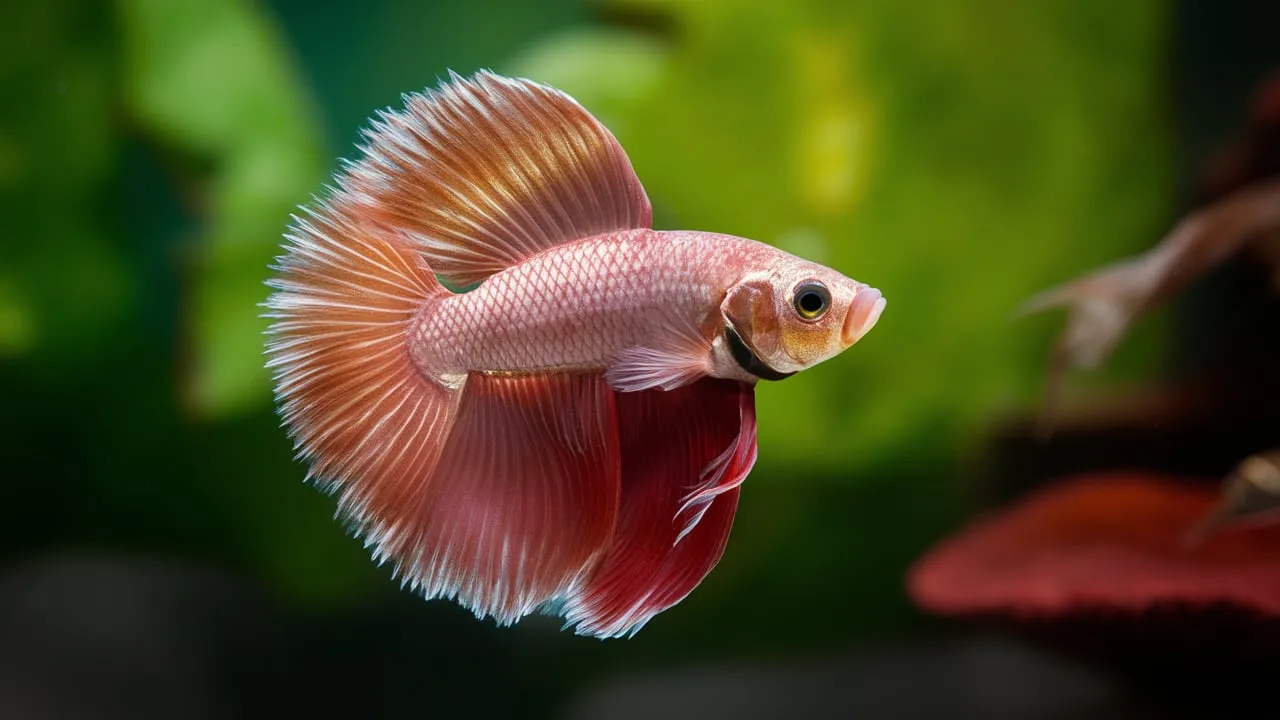Betta fish, also known as Siamese fighting fish, are a popular choice for many aquarium enthusiasts. These vibrant and captivating creatures require proper care to ensure their health and well-being. In this comprehensive guide, Betta Fish Tips will explore the essential elements of maintaining a healthy betta fish, from their ideal living environment to the signs of a thriving betta.

Understanding Healthy Betta Fish Habitat
Tank Size and Setup
Betta fish are often mistakenly thought to thrive in small bowls or vases. However, these compact living spaces can lead to poor water quality and stress for the fish. Ideally, a betta should be housed in a tank of at least 2.5 gallons, with a filter and heater to maintain optimal water parameters.
Water Parameters
Betta fish prefer warm, slightly acidic water with a pH range of 6.5 to 7.5. The water temperature should be maintained between 78°F and 82°F. Regular water changes of 25-50% per week are necessary to keep the water clean and free of harmful ammonia, nitrites, and nitrates.
Decoration and Hiding Spots
Bettas enjoy having hiding spots and plants in their aquarium. Silk or live plants, as well as decorative items like caves or driftwood, can provide the betta with a sense of security and natural enrichment.
Betta Fish Diet and Feeding
Bettas are carnivorous and should be fed a varied diet of high-quality pellets, freeze-dried or frozen foods, and occasional live prey, such as brine shrimp or bloodworms. It’s important to avoid overfeeding, as this can lead to health issues. Feed your betta 2-3 times per day, providing only the amount they can consume in a few minutes.
Signs of a Healthy Betta Fish
Physical Appearance
A healthy betta fish should have the following physical characteristics:
- Bright, clear eyes
- Vibrant, undamaged fins
- A plump, streamlined body
- No visible lesions or discoloration
Behavioral Indicators
A healthy betta will exhibit the following behaviors:
- Active swimming and exploration of the tank
- Eagerness to eat and a good appetite
- Interaction with its environment and other fish (if present)
- Proper gill function and regular breathing patterns
Common Betta Fish Health Issues
Fin Rot
Fin rot is a common bacterial infection that causes the fins to deteriorate and become discolored. It can be treated with antibiotics or by improving water quality.
Swim Bladder Disorder
Swim bladder disorder can cause a betta to float at the surface, sink to the bottom, or swim erratically. This condition can be caused by overfeeding, constipation, or other underlying health issues.
Ich (White Spot Disease)
Ich is a parasitic infection that causes white spots to appear on the betta’s body and fins. It can be treated with specialized medications or by raising the water temperature.
If you notice any concerning changes in your betta’s appearance or behavior, it’s essential to consult with a veterinarian or experienced aquarium specialist for proper diagnosis and treatment.
What Are The Best Tank Mates For Betta Fish In A Community Aquarium?
Here are some good tank mates for betta fish in a community aquarium:
- Corydoras catfish – These peaceful bottom feeders make good companions for bettas.
- Rasboras – Small, peaceful schooling fish like harlequin rasboras or galaxy rasboras.
- Tetras – Neon tetras, cardinal tetras, and other small, peaceful tetras can work well.
- Dwarf rasboras – Tiny schooling fish like dwarf rasboras or chili rasboras.
- Shrimp – Amano shrimp, cherry shrimp, and other small shrimp species.
- Snails – Nerite snails and Malaysian trumpet snails are good options.
The key is to choose tank mates that are peaceful, small in size, and won’t nip at the betta’s fins. Avoid aggressive, large, or fast-moving fish. It’s also important to provide plenty of hiding places and plants to reduce stress on the betta. Start with just a few compatible tank mates and monitor the interactions carefully.
What Plants Are Best For Providing Hiding Spots For The Betta?
Here are some excellent live plants that provide great hiding spots and cover for betta fish in a community aquarium:
- Java Moss – This lush, bushy moss creates a dense mat that bettas love to hide in.
- Anubias – The broad leaves and rhizome structure of anubias species offer many nooks and crannies for bettas.
- Cryptocoryne – The ruffled leaves and slow growth of Cryptocoryne plants make ideal hiding places.
- Hornwort – This floating plant has very fine, feathery leaves that form a protective thicket.
- Water Wisteria – With its dissected, plant-like leaves, water wisteria provides excellent cover.
- Java Fern – The long, wavy fronds of java fern create an inviting, shaded environment.
- Marimo Moss Balls – These unique green algae balls make fun hiding spots for bettas.
When setting up the aquarium, arrange the plants to create lots of visual breaks, overhead cover, and low-flow areas where the betta can rest and feel secure. A densely planted tank will go a long way in keeping your betta happy and healthy in a community setting.
Conclution
By understanding the specific requirements of betta fish and closely monitoring their health, you can ensure your betta thrives and brings joy to your home aquarium.

Bài viết liên quan
How Many Female Bettas In A 10 Gallon Tank?
Betta fish, also known as Siamese fighting fish, are a popular choice for aquarium enthusiasts [...]
Jul
What Is Fighting Fish Fin Rot?
Betta fish, also known as Siamese fighting fish, are a popular choice for aquarium enthusiasts. [...]
Jul
How Do You Know If Your Betta Is Happy?
Owning a Betta fish, or Siamese fighting fish, can be a rewarding experience, but it’s [...]
Jul